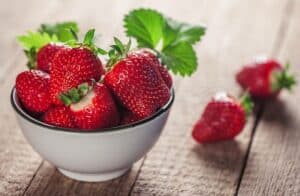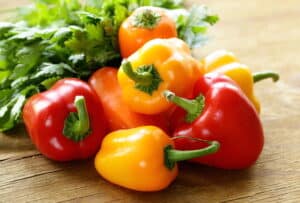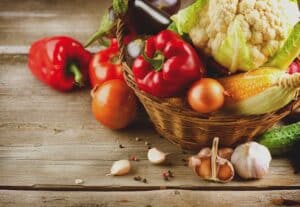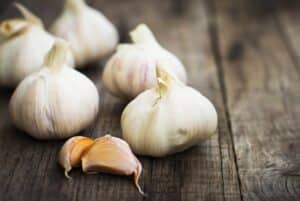Looking to master basic cooking techniques for your plant-based kitchen? Here’s a concise rundown of the most useful skills, from I’m Mad as Hell and I’m Not Going to Eat it Any More* (Perigee Books, 2011) by Christina Pirello, reprinted by permission.
There is a certain magic to the kitchen, an alchemy like no other when it comes to orchestrating ingredients into the perfect meal. The sensuality of coaxing every nuance of flavor from food overwhelms my senses. Simmering pots, steam rising, aromas fill the air. Delicately cooked vegetables, satisfying soups, pasta and grains heady with the fragrance fresh herbs, crisp fresh salads vital with life all come together under the hand of the cook to create the meals that nourish us to health and wellbeing.
Comfort in the kitchen allows you to move from task to task, smoothly and efficiently, intoxicated as the colors and perfumes of the dishes come together. There is little in life more lusty than cooking.
Most of us have come to think of cooking as something we watch on television or some dreaded chore to be endured at the end of a long day. In truth, cooking is life. An art form rapidly being lost in this modern connected world, cooking is the foundation upon which you build your life. No matter what you choose to prepare, your competence in cooking determines whether or not your meals are delicious or pedestrian; sublime or just a way to feed yourself because you must.
Cooking is simple, elegant and satisfying. You only need to master some basic techniques to create a great meal — no matter what chefs or molecular gastronomists tell you.
Braising is a slow cooking process where the ingredients are seared or browned in fat or oil and then simmered in a small amount of liquid until tender. Braising is usually done in deep skillets or in a Dutch oven-style pan so that the juices accumulated in the braising combine to create a richly flavored sauce in the cooking process.
Grilling is a style of cooking where high heat is applied directly to the food…below the food, like a barbecue or in a grill pan over high heat on the stove top. Grilling seals in the flavor of the food and at the same time creates a rich, smoky taste that everyone loves. Of course, use a gas grill; no need to cook your food in a chemical haze of lighter fluid and coal.
Broiling is also a high direct heat that seals in the flavor and imparts a glorious browning that is without compare. The heat is above the food in close contact and cooks very quickly so you need to be diligent when broiling. It is used a lot as a finishing style of cooking, to brown a food once it’s been baked or roasted.
Roasting is a slow cooking style done in the oven. The enclosed, dry, intense heat of the oven surrounds the food and drives the sugars of the vegetables to the surface making them so-o-o-o-o-o-o-o-o-o-o-o-o sweet, they could stand in for dessert. I dress the veggies I am roasting in olive or avocado oil, salt and pepper. That’s it (okay, sometimes I use cinnamon on squash or sweet potatoes…). I cover the casserole dish tightly and roast for forty-five minutes to an hour. Then I remove the cover and return the dish to the oven to brown the edges of the veggies. Yum.
Baking is a technique reserved for oven-cooking breads and pastries. Many chefs would have you believe that to bake well you need to join a secret society and take a blood oath of secrecy. Hardly. Just follow recipes until you have mastered the techniques, the textures, the ingredients and then you can venture off on your own.
Poaching is a simple method by which you simply cook food in simmering liquid, imparting a sweet tenderness and resulting in a dish that is the perfect comforting texture.
Stewing is a moist heat cooking process is a bit like braising except that braising is done in fat or oil, while stewing is done in a broth-style liquid. The food is cooked in a small amount of liquid and served in the gravy that results from the combination of the juices of the vegetables and cooking broth.
Sautéing is a method of cooking that uses a small amount of fat in a shallow pan over relatively high heat. The oil is heated and the ingredients added in succession. The ingredients are usually cut into small pieces or thinly sliced to facilitate quick, even cooking. The ingredients are stirred altogether, constantly moving, allowing steam to escape so that the veggies don’t stew and maintain their crispness. A sauté is seasoned toward the end of the cooking process.
Shallow or pan frying is different than sautéing, although it is often confused with it, as is stir frying. Shallow frying uses more oil and larger pieces of food cooked until browned and then turned once for even cooking.
Stir-frying is the term used for two styles of cooking, one similar to a sauté and the other starting with a hot wok to which the oil is added and then the veggies and seasonings in rapid succession and cooked, stirring constantly to crisp perfection.
Frying or deep-frying is cooking food over high heat completely submerged in hot oil. The result is crisp, light and richly flavored food. If the food is oily-tasting, then your oil wasn’t hot enough. If the oil is hot, the food will sink and immediately rise to the top and brown. It will be in and out of the oil in a minute or two. A hint: bring your oil to the proper temperature (350-375ºF) over low heat to ensure that the oil is hot enough and doesn’t smoke.
Boiling and blanching are methods of cooking in water. Boiling foods involves the food being submerged in water for several minutes to achieve the tenderness desired. Blanching involves a quick dip into boiling water just to remove some of the ‘raw’-ness or bite of a delicate vegetable. A pinch of salt is added to the water before cooking in either of these styles so that the vegetables hold onto more of their nutrients and do not bleed them into the water.
Steaming is a method of cooking where the food is cooked above boiling water, so it actually cooks in the steam that rises off the water. The result is very crisp, brightly colored vegetables that hold a lot of their nutrients in this cooking process. The resulting vegetables are light, fresh and drier than food cooked submerged in water.
With these basic cooking and prep techniques, there’s nothing you can’t achieve in the kitchen.
This article is excerpted from I’m Mad as Hell and I’m Not Going to Eat it Any More* (2011) by Christina Pirello, by permission of Perigee Books.
- Explore VegKitchen’s other Green Kitchen articles, as well as the wealth of kitchen tips in the entire Healthy Vegan Kitchen area.
*This post contains affiliate links. If the product is purchased by linking through this review, VegKitchen receives a modest commission, which helps maintain our site and helps it to continue growing!






edi rusnadi says
I would like to learn how to make sauces, dressings, and salads.
Nava says
Edi, here are:
Sauces: http://www.vegkitchen.com/category/recipes/savor-and-flavor/simple-sauces/
Dressings: http://www.vegkitchen.com/category/recipes/savor-and-flavor/salad-dressings/
Salads: http://www.vegkitchen.com/category/recipes/salads/colorful-salads/ and http://www.vegkitchen.com/category/recipes/salads/savory-salads/
Hope you find what you're looking for here!